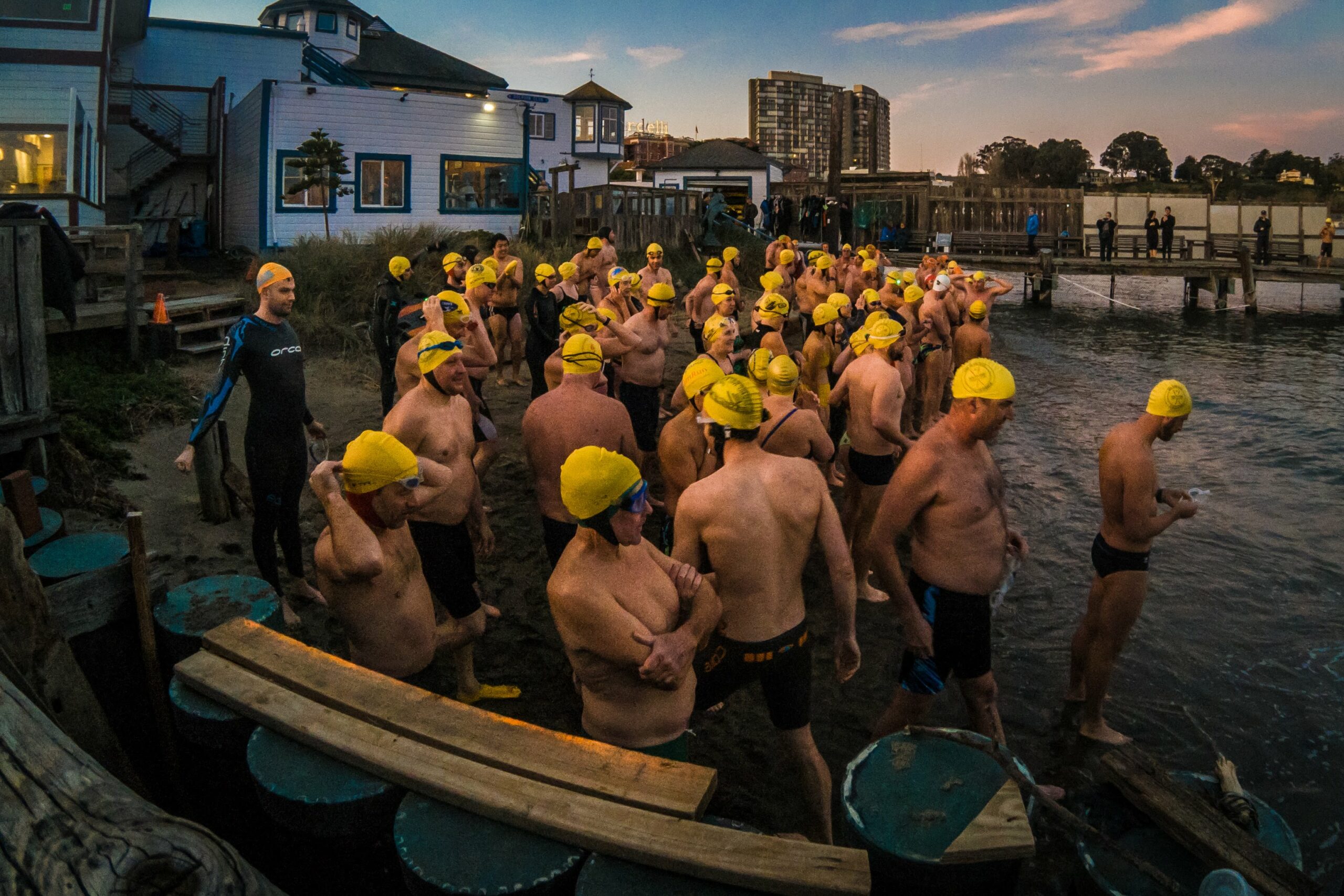All that snowmelt streaming out of the mountains has to go somewhere, and much of it eventually drains into San Francisco Bay. While the water temperature isn’t quite down in the mid-30s, it’s been a chilly winter and anyone venturing in will instantly feel a sort of spiritual connection to the Sierra Nevada.
On Friday, members of the South End Rowing Club, the second-oldest athletic organization in San Francisco, will celebrate the club’s 150th anniversary by plunging right in at Aquatic Park for what organizers call the “Five Coves of Death.” According to club president Fran Hegeler, the water should be around 52 degrees and on the choppy side. Between the current and the wind, the texture of the water is always in flux. These are features, not bugs.
“Some people are in that cold water for three, four or 10 hours at a time,” Hegeler told The Standard. “They want to swim the English Channel. People train for those massive cross-channel swims all over the world—and they train in San Francisco because the water is reliably cold and reliably rough.”
To make it at that level, competitors need qualifying swims of six to eight hours, making South End Rowing Club a haven. Founded in 1873 near the intersection of Berry and Third streets in what’s now known as South Beach, the club now has approximately 1,300 members who engage in open-water swimming and three other sports: open-water rowing, handball and running. They range from former competitive national-champion types to fun-loving people who may harbor—pun intended—a moderate adrenaline addiction.
Hegeler doesn’t mince words. The Five Coves of Death is simply exhausting.
“It’s not very fun,” she added. “Kind of like swimming laps, and even though there’s only five of them, the beauty of open water is it’s an adventure. It is a race, and there are traditions—like you have a shot of whiskey at the end of each cove.”
Not everyone pounds an ounce-and-a-half of alcohol after each segment, of course. A few dozen people have already signed up, and Hegeler expects 75 swimmers in all, although not everyone will finish. If anyone’s struggling, she provides moral support.
“One of my favorite things to do is to be on the dock with my suit on and my parka on,” she said. “You jump in with people who need to do that last lap, because they’re tired and they could really use the company. That’s what we do for each other.”
The “coves” in the event’s name are more of a measurement of distance than distinct geographical locations. They’re meant to train swimmers for truly massive undertakings, like propelling themselves out around the Golden Gate and onto Ocean Beach—without getting sucked out to sea.
As with South End Rowing Club’s New Year’s Day swim from Alcatraz, the event seems to attract people who spend their days shifting their attention from one screen to the next.
“You are in the elements!” Hegeler said. “We like immersive activities. We are physical beings in a physical world, and it gives you the opportunity to let go in your headspace.”
There are all manner of ways to test your body, she added, ever the evangelist. At the same time, it’s rowing and not swimming that gives the organization its name. The club has fiberglass boats for singles and doubles as well as what Hegeler calls a “barge,” meaning a vessel outfitted for a coxswain—a navigator who might also function as a de facto coach—plus six rowers. First launched in 1916, one of the barges is 40 feet in length and painted mauve.
Technically, it’s a pleasure craft, so two people can sit in front. Rowers move in a “sweep row,” with only one 14-foot oar each, a configuration that requires intense coordination. Here, too, Hegeler jumps in as needed.
“When I first imagined doing it, I thought, ‘You can see how beautiful it is on the water!’” she said. “But nope. All you’re looking at is the shoulder of the person in front of you.”
